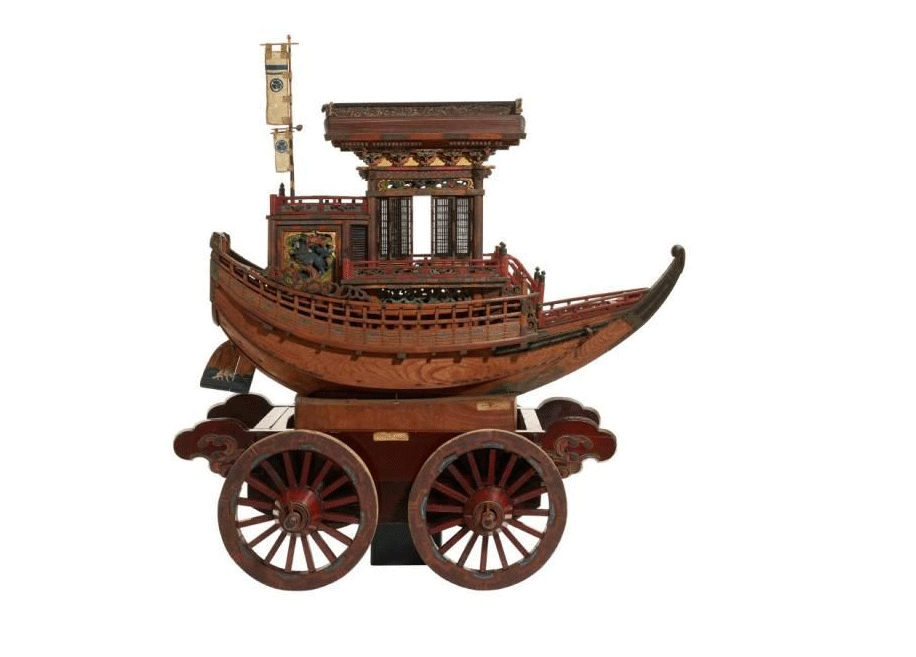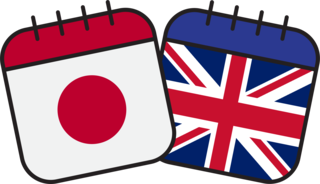
© The Trustees of the British Museum
Japan’s Festival Floats
- 20 April - 2 July 2023
- 10am - 17pm (Friday 20.30)
- The British Museum, Great Russell Street,London WC1B 3DG
- https://www.britishmuseum.org/
- +44 (0)20 7323 8000
- tickets@britishmuseum.org
- Tweet
For centuries, summertime in Japan has centred around spectacular local festivals.
In towns and cities across the country, people take to the streets to celebrate their neighbourhood's shrine with costume
s, dancing, singing and a procession of incredible floats.
This beautifully crafted model of a festival float, set on a wheeled carriage, was donated to the British Museum by the art dealership Yamanaka & Co. in 1908, to mark the Olympic Games in London. However, its story, and even country of origin, remained unclear until investigations which took place during the pandemic.
Recent research through conversations with Japanese researchers has revealed that this float takes the form of the 'state barge' (gozabune), which was the marine transport used by the shogun (hereditary military leaders). The float bears three banners with the crest of the ruling Tokugawa house.
The model was possibly created by Murakami Tetsudō (1867–1919), a woodworker known for elaborate carvings on festival floats depicting mythological subjects. Working for Yamanaka at their factory in Osaka, Tetsudō led the field in producing Western-style furniture with 'Japoniste' carved ornamentation of dragons, phoenixes, chrysanthemums, turtles and fish.
The festival float was probably also made at the factory but, in stark contrast, represents a revival of more traditional forms and customs and came to represent ‘old Japan’.
Japan's longstanding custom of staging local summer festivals is well documented in paintings, prints and books. The display also features some of the objects from the British Museum collection that record and celebrate this history.
Admisson Free
